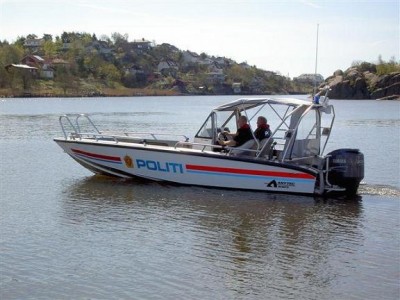Senior Norwegian police figures have raised questions about the level of available resources after it emerged that the police’s only helicopter remained grounded for most of the time during the Oslo and Utøya attacks. It was also revealed that the street on which the Oslo bomb went off had been planned to close by September this year – some seven years after law enforcement authorities first suggested the move.

The police do not have the resources to keep their one helicopter in continuous operation. A report by newspaper Dagsavisen claims that up until Easter this year, the helicopter had been inactive 66 percent of the time. The helicopter has a very powerful camera that, according to broadcaster TV2, would have easily have been able to pick up people, including Breivik, and other details at Utøya. Furthermore, police sources have told TV2 that two snipers could easily fit on the aircraft.
‘Limited funds’
Many policemen who have spoken to TV2 have apparently said that a police helicopter could have made “an essential difference” and “stopped” Breivik. The leader of the police trade union (Politiets Fellesforbund, PF), Arne Johannessen, commented to Dagsavisen that his members “have been reasonably clear for several years that there has been a disharmony between society’s expectations and the resources that have been available,” adding that the fact that Sweden has seven such helicopters means that Norway “lies 10 years behind Swedens helicopter service.”
A former police chief in Oslo, Finn Abrahamsen, agreed, telling Dagsavisen that he felt the capital’s police district should have a minimum of two helicopters available at any one time in case one needs repairing, with the helicopters being big enough to carry large response units. He feels that the fact that no helicopter was used during the response to the Utøya shootings “is caused by limited funds,” suggesting that “the police have for many years had all too little money.” The cost of the helicopter currently available to Oslo police is NOK 40 million (USD 7.4 million) per year, according to Abrahamsen.
It has also become apparent that Oslo police “informally” asked the army for use of one of their military helicopters just 20 minutes before the Utøya shootings began, but the helicopter was not in the air until after the attack took place. This was confirmed to Dagsavisen by Colonel Petter Lindqvist, who would nonetheless not disclose how long it had taken to get the helicopter into the air. When asked why it took so long for the military to respond, Oslo police chief of staff, Johan Fredriksen, told NRK that “they have a preparedness arrangement that means that they are not ready at all times with their resources,” adding that the military would have to explain those arrangements themselves “but it is how society is organized.”
Chief of staff Fredriksen promised when speaking to TV2 that the issues around the readiness of the helicopter would be addressed in due course. A government commission will examine the response to 22 July, and is believed to be likely to publish their findings in a year.
Bombed street to close by September
Meanwhile, it emerged that Grubbegata, the street on which the Oslo bomb was left, had been put forward for closure as long as seven years ago by the police in order to reduce the threat of a terrorist attack. According to NRK, warnings had been made by both the police and the police’s intelligence unit about closing the road. The closure of Grubbegata to traffic had been planned by September this year.
The Oslo city council leader responsible for city development, Bård Folke Fredriksen, told NRK that planning and building regulations had made implementing the police’s recommendations difficult. He wants the committee charged with reviewing the response to the Oslo and Utøya attacks to consider how planning proposals related to security can be dealt with more quickly.
‘Record’ compensation likely
It has also been revealed that the families of those who died, those who were injured, those who were threatened and many of the volunteers who put their own lives on the line during the 22 July attacks could receive a record amount of compensation. The Norwegian Criminal Injuries Compensation Authority, which compensates victims and relatives of victims of many different kinds of violent crimes, believes that a large number of those affected will demand maximum compensation, which amounts to more than NOK 3 million (USD 555,885). The head of the authority, Ivar André Holm, confirmed to NRK that NOK 197 million (USD 36.5 million) had been given out last year and that the sum after the terrorist attacks would “very clearly be significantly higher.” Many of those who can apply are believed to already have found lawyers, although the majority will have to wait until the case against the suspect is completed. Only some of those with a clear case for compensation will be entitled to an advance payment.
Those affected may also be able to receive compensation through a range of insurance arrangements such as travel insurance, job-related insurance or children’s accidents insurance.
Views and News from Norway/Aled-Dilwyn Fisher
Join our Readers’ Forum or comment below.
To support our news service, please click the “Donate” button now.

